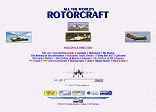|
| Developed in parallel with the Yak-23, the similarly-powered Yak-25 was conceptually more advanced and derived from the Yak-19. By comparison with the earlier fighter, the Yak-25 employed the higher-speed TsAGI S-9S-9 laminar section at the wing root translating to a KV-4-9 section at the tip with a constant thickness of 9% throughout. Despite the greater diameter of the 1625kg Rolls-Royce Derwent - similar to that installed in the Yak-23 prototypes - than the RD-10F of the Yak-19, the diameter of the fuselage of the Yak-25 was unchanged. Sweptback horizontal tail surfaces were adopted, provision was made for two 200-litre drop tanks under the wing tips and armament comprised three 23mm NR-23 cannon. The first of two prototypes was flown on 31 October 1947, but, although the subsequent flight test programme was allegedly successful, no production contract was issued for the Yak-25. One of the prototypes was utilised during 1948 for (fixed) tandem-wheel undercarriage trials as part of the Yak-50 development programme.
 | A three-view drawing (1660 x 1157) |
| WEIGHTS |
| Take-off weight | 3235 kg | 7132 lb |
| Empty weight | 2285 kg | 5038 lb |
| DIMENSIONS |
| Wingspan | 8.88 m | 29 ft 2 in |
| Length | 8.65 m | 28 ft 5 in |
| Wing area | 14.00 m2 | 150.69 sq ft |
| PERFORMANCE |
| Max. speed | 972 km/h | 604 mph |
| Range | 1445 km | 898 miles |
| neiyi, 20.06.2011 14:28 tandem-wheel undercarriage trials as part of the Yak-50 development programme. reply | | hans 2603, e-mail, 14.06.2011 22:27 hier kann bombardier aber garnicht meckern ,falls er �berhaupt ahnung von flugzeugen hat , oder wenigstens etwas geschmack .... reply |
|
Do you have any comments?
|
| 
COMPANY
PROFILE
All the World's Rotorcraft
|







